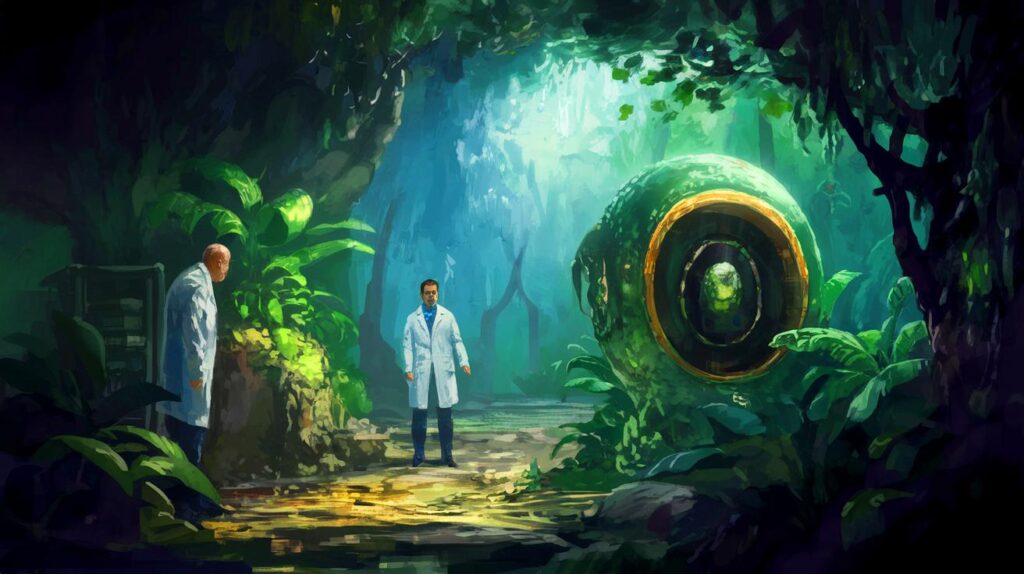| IN BRIEF |
|
The prehistoric world holds many mysteries, but few are as captivating as that of the Prototaxites. This giant from the Paleozoic era, thriving about 430 million years ago, does not fit into any known organism today. Its discovery has sparked a scientific debate that persists for over a century and a half. Recent research continues to reshape our understanding of this enigmatic organism, defined by its lack of connection with any known realms of life today.
The Unknown Colossus of the Paleozoic
During the Silurian geological era, the terrestrial landscapes were dominated by gigantic and strange formations. Among them, the Prototaxites stood out with impressive dimensions, sometimes reaching eight meters in height and three meters in diameter. This period predates the emergence of forests and dinosaurs, making the presence of such structures even more intriguing. They represented one of the first large life forms to establish themselves on land.
Despite their apparent dominance for millions of years, these giants vanished without leaving identifiable descendants. Their exact nature, as well as their role in the primitive ecosystem, remains unclear. When first discovered in 1843, scientists initially thought they were fossilized conifers, but this hypothesis was quickly questioned. The absence of forests at that time and the atypical internal anatomy of the Prototaxites indicated that it was something entirely different.
Giant Fungus or Creature from Another World?
In the 2000s, the hypothesis that Prototaxites was a giant fungus gained traction. Carbon isotopic analyses suggested a saprophytic lifestyle similar to that of modern fungi. This theory seemed to settle the debates, but new discoveries have cast doubt on this conclusion.
A team led by Corentin Loron recently examined exceptionally well-preserved Prototaxites fossils in Scotland. Their analyses revealed an internal structure that does not match any known fungi. They discovered formations called “medullary spots” and unique types of tubes, suggesting a more complex and mysterious biology. These unique features have reignited scientific interest and opened new avenues of research.
The Chemical Signature of a Ghost Lineage
Molecular research has added a new dimension to the enigma of the Prototaxites. The absence of chitin or chitosan, characteristics of fungi, was surprising. Instead, Prototaxites tissues contain aliphatic, aromatic, and phenolic compounds, reminiscent of plant lignin, but with a unique composition.
Analyses have also searched for perylene, a biomarker for ascomycete fungi, and found it absent in the Prototaxites. These results indicate that this organism cannot be classified among known realms, making it a wholly independent evolutionary lineage. The Prototaxites represents an evolutionary experiment that did not survive, yet challenges our understanding of early terrestrial ecosystems.
Summary of Prototaxites Characteristics
| Characteristic | Description |
|---|---|
| Height | Up to 8 meters |
| Internal structure | Presence of medullary spots and three types of tubes |
| Chemical composition | Absence of chitin, presence of lignin-like compounds |
| Period | Silurian, approximately 430 million years ago |
The Prototaxites remains one of the greatest enigmas in the history of life on Earth. Its complex nature and unique characteristics continue to defy traditional scientific classifications. As researchers explore this mystery, they uncover not only the secrets of a prehistoric organism but also new perspectives on the evolution of terrestrial life. What other surprises does the distant past of our planet still hold, waiting to be revealed by modern science?









